I left Japan on 6th July 2016, and arrived Quebec City to have meeting at CEN (Center for Northern Studies) in University of Laval. We have an opportunity to conduct a collaborative research with Canadian colleagues, using the network of CEN’s eight field stations at from 55°N to 83°N in eastern Canada. The station of Ward Hunt Island locating in the northernmost of those stations is a study area at this time (Fig.1). The team members are six people in total (4 from Canada and 2 from Japan).
On 10th July morning, we headed to Ottawa by a van, then we departed from Ottawa airport to Iqaluit on 11th morning, and arrived Resolute Bay where PCSP (Polar Continental Shelf Project) locates after stopping at Arctic Bay from Iqaluit for refueling. Next day, we left Resolute Bay at 7:30 pm by Twin Otter and stopped at Eureka, then, arrived Ward Hunt Island at past 0:00 am. The distance from Ottawa to Resolute Bay is about 3000 km, and Ward Hunt Island is still about 1000 km far from Resolute Bay. According to Warwick, our team leader and also the science director of CEN, Ward Hunt is “Top of the world”.
Fieldworks on the ecosystem study of Ward Hunt Lake and Lake A locating Northern Ellesmere were conducted during 12th to 20th July. We accessed from the camp to Ward Hunt Lake on foot, and to on the ice of Lake A by a helicopter directly. We drilled holes to the lake ices by ice drill, then, measurement of the water column (water depth, conductivity, dissolved oxygen, light spectra), sample collection, and underwater filming were carried out. In addition to these, a mooring system was installed underwater to record the water environment for a year continuously.
Although the ice-cover of Ward Hunt Lake had never melted until 2008, 4 m of the ice thickness in summer 2006 became to 3 m in summer 2008, then the ice-cover completely disappeared in summer 2011. After that, the ice-cover of Ward Hunt Lake gets to thinner and develops to only about 2.5 m in maximum. Also, regarding Lake A, the ice-cover completely disappeared in 2003 for the first time. Inside these lakes, the environment change occurs considerably rapidly more than the ground. The fieldwork at this time was a good opportunity for me to realize clearly that we need to address this problem through studies of water dynamics and the relationship to the organisms underwater.
Yukiko Tanabe (NIPR, a member of Theme 6)
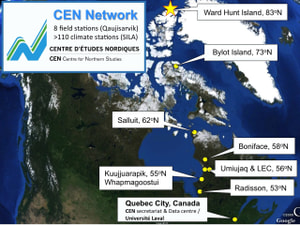 Figure 1: 8 field stations of CEN (Center for Northern Studies) from 53°N to 83°N (Ward Hunt Island is at the top of the figure)
Figure 1: 8 field stations of CEN (Center for Northern Studies) from 53°N to 83°N (Ward Hunt Island is at the top of the figure)
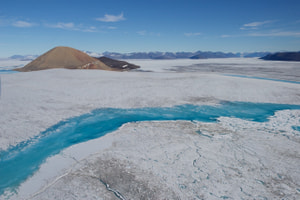 Ward Hunt Island (left in the photo) and Northern Ellesmere (background)
Ward Hunt Island (left in the photo) and Northern Ellesmere (background)
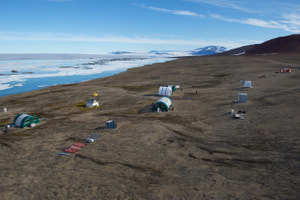 Camp at Ward Hunt Island. There are some relics of the past during a cold war
Camp at Ward Hunt Island. There are some relics of the past during a cold war
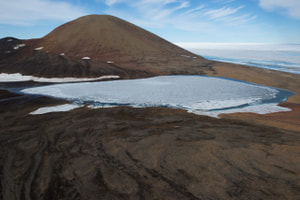 Ward Hunt Lake. The camp area can be looked as tiny spots along the seashore behind the lake
Ward Hunt Lake. The camp area can be looked as tiny spots along the seashore behind the lake
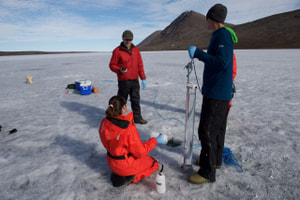 Measurement and collecting samples from the water on the ice of Ward Hunt Lake
Measurement and collecting samples from the water on the ice of Ward Hunt Lake
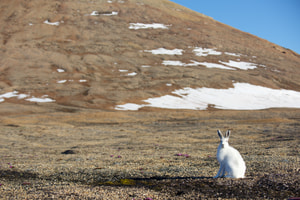 Arctic hare living near the base camp in Ward Hunt Island
Arctic hare living near the base camp in Ward Hunt Island
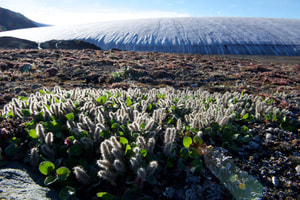 Arctic willow reaching full bloom in Northern Ellesmere
Arctic willow reaching full bloom in Northern Ellesmere
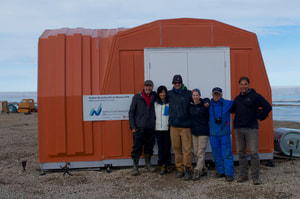 All members of our team at the front of CEN’s laboratory in Ward Hunt Island
All members of our team at the front of CEN’s laboratory in Ward Hunt Island




